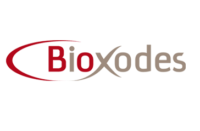In the field of stroke treatment, there is a saying “time is brain.” This is because every minute with a clot a patient loses millions of brain cells. Stroke patients living near one to the nation’s Comprehensive Stroke Centers (CSC) are luckier than most. In 2015, 81 percent of stroke patients treated at CSCs had been treated within two hours of their arrival. That is up from 22 percent, in 2013. Early intervention is key to decreasing recovery time, as well. Many patients who may have been sent to a nursing home were able to go to a rehab center instead, and patients who would have needed to go to rehab were able to go home.
Stenting and Clot Removal Capabilities and CSCs
According to the 2015 study, over 60 percent of stroke patients treated with a stent and retriever resumed full independence and function after three months. That is compared with 35 percent of those who were treated with drugs alone. It is estimated that one-third of Americans who suffer strokes each year are found to have blockages in their arteries large enough to be treated with clot-retrieving stents. However, only about 28,000 were actually treated with one last year, according to Stacey Pugh, VP of Medtronic’s Neurovascular Division. The reason is due to a lack of facilities, staff, and trained physicians.
Too Few Comprehensive Stroke Centers in the US
According to research, there are only 150- 200 facilities in the U.S. recognized as Comprehensive Stroke Centers. As a result, procedures like neurovascular stenting and clot removal, just aren’t available in many parts of the country.
This is unfortunate on many levels. First, there is the aspect of improved patient outcome which correlates directly with treatment received at comprehensive stroke centers. This is observed in both types of stroke, hemorrhagic and ischemic. There are also the improved outcomes including shortened recovery times associated with neurovascular stenting and clot removal. Finally, the cost reduction that occurs from these improved results.
How Hospitals Can Become Certified as a Comprehensive Stroke Center
So, why then aren’t more hospitals certified as CSCs? The requirements include an in-house neurosurgery unit, specialized training, and space. Currently, 350 U.S. hospitals are equipped to perform the procedures and are working through the process to receive certification as comprehensive stroke centers. According to the AHA, Comprehensive Stroke Center Certification is given to hospitals that meet standards to treat the most complex stroke cases. Eligibility standards include all components of a basic or Primary Stroke Center plus:
- 24/7 available advanced imaging capabilities including MRI/MRA, CTA, DSA and TCD
- 24/7 available trained staff – vascular neurology, neurosurgery and endovascular
- Neuro ICU
- experience and expertise treating patients with a variety of ischemic strokes, intracerebral hemorrhage, and subarachnoid hemorrhage
The certification is provided through a partnership between the American Heart Association and the American Stroke Association as well as The Joint Commission.
Our strategy focuses on enabling our clients to recruit the right people for the structure in which they will perform. Please contact us to learn more about our expertise in Executive Search for Commercial Leadership positions in Medical Device and Biotechnology; including Marketing, Strategy, Sales Leadership, Training, Development, etc. We look forward to the opportunity to help you consistently improve your performance and your business!
Follow me on Twitter @PrimeCoreSearch.
Email: Ken@prime-core.com






